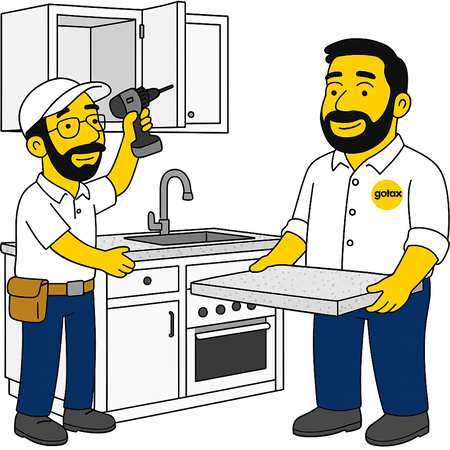June 23, 2025
Rental Property Repairs vs Improvements: What You Can and Can’t Claim
Published July 2025
If you’re a landlord, chances are you’ve had to fix, patch, replace, or "just temporarily duct tape" something in your rental. But here’s the kicker: not all fixes are created equal in the eyes of the ATO.
Claim the wrong thing, and you might miss out on legit deductions—or worse, trigger an audit.
So let’s break it down: What’s a repair, what’s an improvement, and how can you claim each the right way?
⚡Summary
Want to know the difference between a deductible repair and a capital improvement on your rental property? This blog explains what you can claim immediately, what you need to depreciate, and how to keep the ATO happy. Includes real examples, FAQs, and a guide to lodging your rental deductions through www.gotax.com.au.
What Counts as a Repair?
A repair restores something to its original condition. It doesn’t improve or upgrade—it just fixes what’s broken or worn out from renting the place out.
✅ Examples of Repairs You Can Claim
-
Replacing cracked bathroom tiles
-
Fixing a broken oven
-
Repairing a leaking tap
-
Repainting flaking walls
-
Replacing a busted fence panel
Derek Tip: These are usually immediately deductible in the year you incur the cost.
What Counts as an Improvement?
An improvement enhances the property or adds value. It’s not fixing—it’s upgrading, and that changes the tax game.
❌ Examples of Improvements
-
Fully renovating the kitchen
-
Replacing a carpet with hardwood flooring
-
Installing solar panels
-
Building a new pergola
-
Adding ducted air conditioning
These are considered capital works or depreciable assets. That means you can’t deduct the full amount right away—you claim it over time.
xample: You spend $15,000 replacing the kitchen. That’s an improvement. You’ll depreciate it over several years (usually 2.5% per year for capital works).
Depreciation vs Capital Works
It’s not just about what you spend, but where it fits.
-
Capital Works (Division 43) = Structural upgrades (e.g. new walls, roofing, concrete)
-
Depreciating Assets (Division 40) = Things like appliances, carpets, and furniture
Real-Life Examples
✅ Deductible Repair Example
$1,200 to replace broken guttering due to wear and tear = fully deductible this year
❌ Improvement Example
$10,000 to upgrade from lino to timber floors = must be depreciated over time
Mixed Example
Paid $4,000 for plaster repairs and upgraded lighting? Split the invoice:
-
Repairs = Deduct now
-
New lights = Depreciate
FAQs: Repairs vs Improvements
Can I claim the full cost of repainting the property?
Yes, if it's to refresh or restore worn paint. No, if it’s part of a renovation or major improvement.
What if I repair something with better materials?
If it’s a like-for-like fix, you’re fine. But if you upgrade (e.g. basic sink → luxury basin), that’s an improvement.
Can I split a repair and improvement on one invoice?
Yes. Just make sure the cost is clearly split, or get separate invoices.
Do I need receipts?
Absolutely. If you're claiming, the ATO wants proof. Upload it straight into your GoTax account for safekeeping.
Gotax Bonus Tip
Using www.gotax.com.au? Just pop your rental property expenses into the Rental Schedule, and we’ll sort the timing for you—repairs get claimed now, improvements go to depreciation. We even calculate your share if you don’t own 100%.
You do the data. We do the deductions. Easy.
Final Word from GoTax
When it comes to rental property deductions, it’s all about playing by the rules—without leaving cash behind.
Repairs? Claim 'em now.
Improvements? Slow and steady wins the tax game.
Confused? Derek’s on standby.
Lodge your rental property return today at https://www.gotax.com.au/rental-pricing
More Great Topics
Traffic Controllers Car Expenses






Leave a Comment